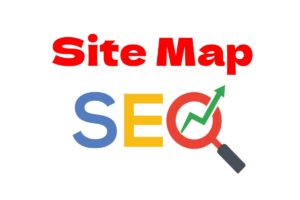
Java web frameworks: The Java framework is unique to the Java programming language, serving as a forum for the development of software applications and Java programs.
Java Frameworks and Java Web Application Technologies
When combined with a framework, Java can provide the right answers to problems in any domain, including e-commerce, accounting, cloud services, finance, big data, stock exchange, IT, and many others. If you’re just starting out with Java, this blog should walk you through all of the relevant concepts you’ll need to consider when interacting with frameworks.
What exactly are Java Frameworks?
The Java framework is unique to the Java programming language, serving as a forum for the development of software applications and Java programs. Java frameworks can include predefined classes and functions used to process, input, and control hardware devices, as well as communicate with software systems. It depends on the framework type, the designer’s skill set, what they’ve been aiming for, and their interests.
What are frameworks used for?
Frameworks provide a design for applications. For one thing, with the right testing framework, we can automate a lot of things and get detailed and reliable results. If there are frameworks for ORM, web, logging, data processing, and so on. Instead of worrying about common pieces of code used in domains or applications, it would simplify a developer’s future and allow them to focus more on business logic.
What exactly is a Java Web Application?
A web application aided clients in connecting with servers and accessing information. Java is also ideal for developing large web applications due to its ability to connect with a wide range of systems. Resources such as peer-web services, database networking, and back-end services can also be obtained through Java web development.
Java Web Application Technologies:
JDBC API:
Java Database Connectivity (JDBC) includes database access mechanisms and queries. Customers can modify any details in the database using web-based applications that include JDBC drivers. JDBC drivers are classified into four types for connecting to databases: JDBC-ODBC Bridge Driver, Native Driver, Network Protocol Driver, and Thin Driver.
Servlet API:
The javax.servlet package includes several interfaces such as servlet, filter, filterchain, servlet config, and so on. Servlet increases the capacity of servers that previously hosted application forms. The request-response method is used by web applications written in Java and run on the Java server. A servlet has a life cycle that begins with initialization and ends with garbage collection.
JSP:
JavaServer Pages (JSP) technologies are used by developers to easily create platform and server independent web content. Instead of providing separate CGI (Common Gateway Interface) files for embedding dynamic elements in HTML pages, you can use JSP technologies, which have access to the entire set of Java APIs.
Java Persistence API (JPA):
The Java Persistence API (JPA) uses object-relational mapping to connect an object-oriented architecture to a database. In Java applications, relational data can be handled quickly using Java Persistence. It aids in the persistent retention or extraction of a large volume of data in/from the database.
The following are the top five Java web frameworks for web development:
1. Spring:
The Spring Framework is a strong, lightweight web application framework that is rated first due to its exceptional ability to develop high-performance, complex web applications. The main features of the Spring Framework enable Java developers to quickly build enterprise-level applications. Spring includes a number of modules that can be used in business applications, including Spring MVC, Spring Core, Spring Protection, Spring Transactions, Spring Boost, Spring ORM, and others. Let’s take a look at how the Spring framework is used in this case.
Spring Framework used
- Web application development with the Spring Framework
- Its features can be used to develop any Java application.
- In Java Enterprise Edition, this term is frequently used (JEE)
2. Java Server Faces (JSF):
Oracle created Java Server Faces (JSF) for the creation of enterprise apps, native applications, and web apps. It is used to create user interfaces for Java-based applications. It is a strong MVC system based on modules. It has a simple and direct interface that distinguishes between application logic and description. JSF allows developers to create User Interfaces by simply dragging and dropping UI components. It makes it simpler to create an application’s display layer without specialized knowledge of client-side technologies like HTML, CSS, and JavaSript.
Uses of Java server faces
- Java server aids in the development of native applications
- JSF is a component-based user interface framework.
3. Hibernate:
Hibernate ORM is a secure object-relational mapped framework for Java. It is possible to improve coordination between the Java programming language and relational database management systems (RDBMS). If you work in an object-oriented language such as Java, you will encounter an issue known as Object-Relational Impedance Mismatch, also known as Paradigm Mismatch. Because OO languages and RDBMSs handle data differently, there may be serious mismatch issues. As a result, Hibernate provides a system that aids in overcoming Java’s mismatch issues.
Hibernate uses
- This enables the creation of object-oriented permanent classes.
- It allows you to communicate with any database with very small code changes, effectively bridging the gap between objects and relational words.
- It is a sophisticated ORM application that allows you to perform Java object database operations.
4. Google Web Toolkit (GWT):
Google Web Toolkit (GWT) is a free, open-source web platform that allows developers to create and debug Ajax applications in Java. With GWT, you can create complex browser-based applications without knowing anything about front-end technologies like JavaScript. One of the most amazing features of GWT is its cross-browser portability, history and managerial staff, internationalization, and bookmarking. GWT is used in a number of Google products, including AdSense, Google Wallet, and Blogging.
Google web toolkit uses
- It makes use of Google APIs.
- It is developer-friendly and aids in the development and maintenance of complex JavaScript front-end applications.
5. Vaadin:
Vaadin is a Java framework that is widely used. Modern developers use this application to determine market priorities. A Vaadin employs GWT to create the final web page. It employs a component-based approach that relieves developers of the burden of coordinating browser improvements. It enables programmers to easily create applications by providing a comprehensive set of UI components. Vaadin provides the ability to bind data using MVC or MVP by creating a structure in Java, HTML, or both.
Vaadin uses
- Vaadin only does server-side programming.
- The plug-in supports it.
Conclusion:
Understanding the top frameworks is not difficult, but choosing the most appropriate for your needs can be! We also come across the most well-known and widely used Java web frameworks. After reading this, you should have a better idea of which structure would suit your specific needs. If you’re a beginner, I recommend that you look at this Java Infographic to quickly understand Java.







